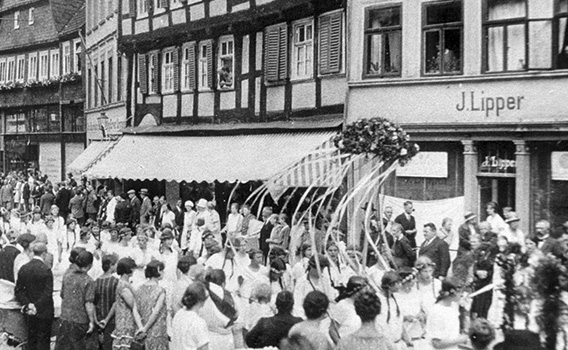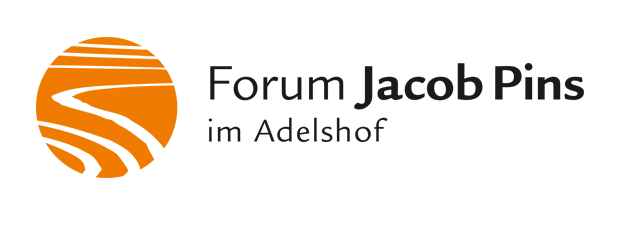
Hoexter’s Jewish Community
That Jews have been present in Hoexter since 1384 can be proven by so-called Jew Travel Permits. At first, these were most probably carried by individuals or families who remained in Hoexter for only a limited period. Certainly they lived here according to their own religious rules and customs, but were, and remained for hundreds of years, inhabitants who were tolerated but with limited rights until the 19th century when they were gradually recognized as citizens with equal rights.
No specific information is available to pinpoint a specific date when one can ascribe the existence of a Jewish community in Hoexter which would prove a permanent presence of Jews in the town.
But one can assume that since the 16th century at the latest one can speak of a permanent (small) Jewish community which then increased gradually. In 1618 one can already assume a population of 30-48 individuals who lived, possibly since the end of the Middle Ages in the Jewish-occupied Judengasse (Jew Alley) behind the Kiliani Church. Also, in the middle of the 17th century, nine so-called Jewish Protected Families, were cited for minor violations and made liable for expulsion along with others who did not have protected status.
During this period various sources made reference to the Jews in Hoexter as a Jewish community. Mentioned in 1629 were a rabbi as well as a teacher. In 1661, the Jew Gottschalck petitioned the Hoexter City Council not to close the synagogue or school. A number of documents are available from the second half of the 17th and the entire 18th century, but these files have to a great extent not as yet been evaluated.
Only in the 19th century, with gradual acquisition of equal rights for the Jews, does the Jewish community in Hoexter appear more regularly in the records as in 1823 with the organization of a society to build a synagogue which was completed ten years later. In 1836, the Jewish community proposed and forwarded a synagogue resolution to the provincial government which approved it after submitting it for approval to Chief Rabbi Sutro. Because of this, the Jews of Hoexter were able to elect a leader and four deputies as their representatives. The synagogue communities were reorganized when a new law was proclaimed on July 23, 1847 regarding the Jews in the Kingdom of Prussia and which the Jewish communities were granted the status of public, government-supervised corporations. This new regulation, which was approved by the Governor (Oberpraesident) of Westphalia on January 12, 1854, remained in force until 1929 except for some amendments in 1855 and 1894.
All Jewish residents within the police administrative area of the town of Hoexter were members of the synagogue community. Membership dues were mandatory. The community was represented by a nine-person body, elected by the qualified male members of the community. These in turn also elected a committee of three which acted as the community’s liaison to the Hoexter community at large.
The rules also determined the voting rights (active and passive), supervised education, the organization and maintenance of the cemetery, the assignment of seats at the synagogue, care of the poor and sick as well as the budget and financial administration.
On the whole, these rules remained valid until the end of the Weimar Republic. Beginning in 1933, as the Nazis came to power, the government issued exceptions to the laws, regulations, decrees, against the Jewish population, which then also increasingly limited the independence of the Jewish communities. In 1938, the Jewish communities were downgraded to registered associations. At the end of 1939, the last-siding members of the council, the merchant Paul “Israel” Netheim, the veterinarian Dr. Leo “Israel” Pins and the physician Dr. Richard “Israel” Frankenberg entered the association on the register as the Jewish Cultural Association of the Hoexter Jewish Community” which then expired with the deportations of 1941/1942.
